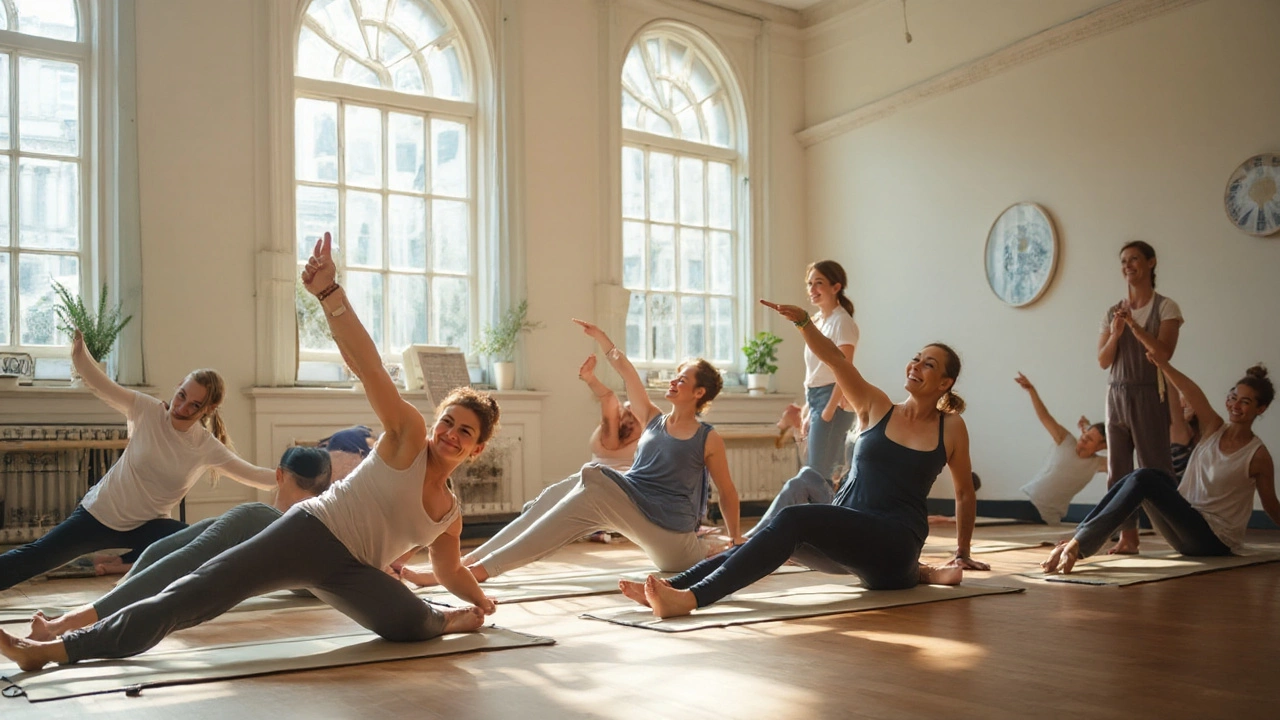Pilates Body Basics: How to Build Strength, Flexibility and Balance
If you’ve heard the word Pilates and wonder what it actually does for your body, you’re in the right spot. Pilates mixes controlled breathing, precise movements and a focus on the core. The result? A stronger mid‑section, better posture and more ease in everyday activities. You don’t need fancy equipment – a mat and a little space are enough to get started.
Most people start Pilates because they want a workout that’s low‑impact but still challenging. Unlike high‑intensity cardio, Pilates works the muscles slowly and deliberately, which helps protect joints while still giving you a solid burn. It’s also great for increasing flexibility because each move stretches the muscles you’re strengthening at the same time.
Key Pilates Moves for a Strong Core
Here are three beginner‑friendly moves that hit the core from different angles. Do each for 10‑12 reps, focusing on smooth, steady breathing.
The Hundred – Lie on your back, lift your head, neck and shoulders, and straighten your legs at a 45‑degree angle. Pump your arms up and down while inhaling for five counts and exhaling for five. The rhythmic breathing trains endurance and wakes up the deep abdominal muscles.
Roll Up – Start lying flat, arms reaching overhead. Inhale, then exhale as you roll up vertebra by vertebra, reaching for your toes. Inhale again, and roll back down with control. This move stretches the spine and strengthens the abdominal wall.
Single Leg Stretch – Lie on your back, bring one knee into your chest while extending the opposite leg straight. Switch legs in a smooth, alternating pattern, keeping your lower back pressed to the mat. It challenges the core and improves hip mobility.
Adding a prop like a small Pilates ball or a resistance band can increase the challenge without making the move feel harder. The key is to keep control; if you’re wobbling, you’re using momentum instead of muscle.
Tips to Keep Your Pilates Practice Safe and Effective
1. Focus on breath – In Pilates, breath isn’t just a side note. Inhale to prepare, exhale to engage the core. Good breathing helps you stay stable and prevents you from holding tension in the neck or shoulders.
2. Maintain neutral spine – Whether you’re sitting or lying down, keep the natural curve of your lower back. If you feel a low back arch, engage your belly button toward your spine.
3. Start slow – It’s tempting to jump into advanced moves, but building a solid foundation is what makes progress sustainable. Master the basics before adding twists or leg lifts.
4. Use a mat with enough cushion – A thin mat can hurt your joints, while a too‑soft one makes balancing tough. Choose a mat that’s firm enough to feel your body’s alignment.
5. Listen to your body – If a movement causes sharp pain, stop. Discomfort in the muscles is normal, but pain is a sign you need to adjust or skip that step.
Integrating Pilates into your weekly routine doesn’t have to be a massive time commitment. Even a 15‑minute session a few times a week can improve posture, reduce back pain, and give you a tighter core. Pair it with a short walk or light cardio, and you’ve got a balanced fitness plan that works for busy lives.
Ready to try? Grab a mat, set a timer for 20 minutes, and cycle through the moves above. Focus on breathing, keep your movements controlled, and you’ll feel the benefits in just a few sessions. Keep tracking your progress – note how long you can hold the Hundred or how many Roll Ups feel smooth. Over time, you’ll notice stronger muscles, better flexibility, and a calmer mind. That’s the Pilates body difference.

Can You Really Get Fit With Pilates? The Truth About Pilates Fitness Results
Maeve Larkspur Aug 5 0Is Pilates enough to get truly fit? Uncover real Pilates results, learn if it’s all you need, and pick up smarter fitness tips and facts about this popular workout.
More Detail